Document Library
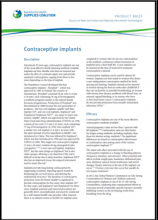
2013 Technical Brief on Contraceptive Implants
This document provides a brief history of implants and a description of their efficacy, side effects, and programmatic use.
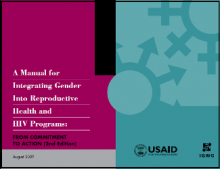
A Manual for Integrating Gender into Reproductive Health and HIV Programs: From Commitment to Action (2nd Edition)
This manual provides detailed instructions and tools for planning, developing, implementing and evaluating gender-sensitive programs for reproductive health and HIV (available in English, Spanish and French).
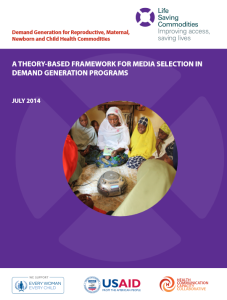
A Theory-Based Framework for Media Selection in Demand Generation Programs
This guide is a resource to help increase the demand for the 13 reproductive, maternal, newborn and child health (RMNCH) commodities identified as underutilized by the UN Commission on Life-Saving Commodities (UNCoLSC) for Women’s and Children’s Health. The guide provides step-by-step information and practical tools to guide media selection (i.e., communication channels) for demand generation activities using a theory-based approach. The guide has a focus on information and communication technology (ICT) and new media channels, as there is little current guidance available regarding the selection of these channels.
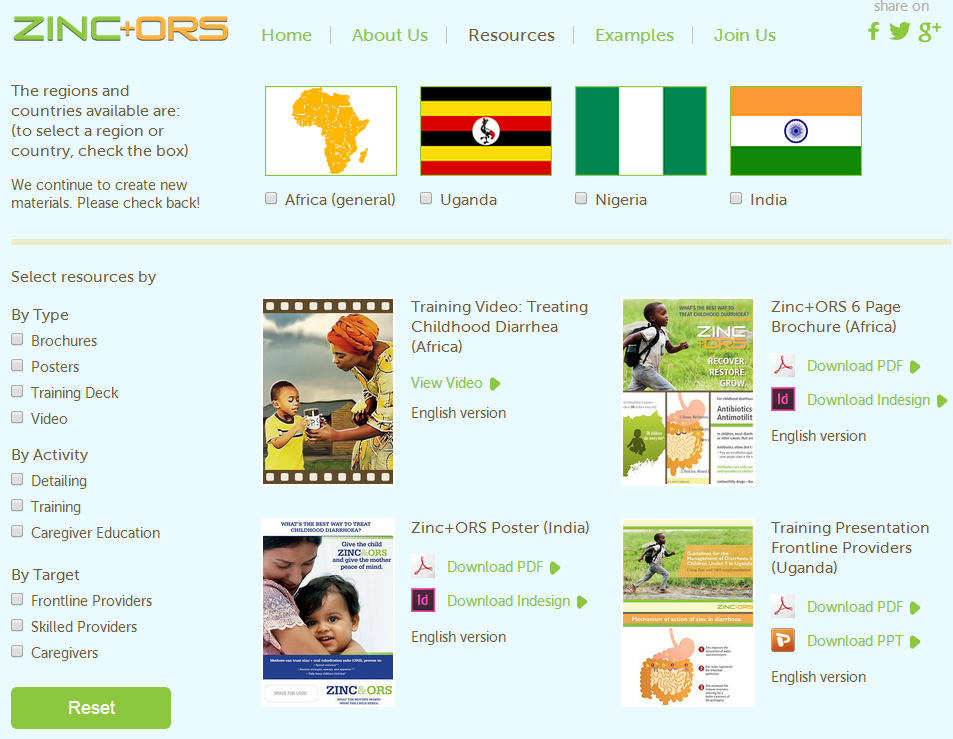
Adaptable Healthcare Provider Resources for ORS/Zinc
Adaptable Resources to assist efforts to promote the use of Zinc/ORS, including detail aids, posters, Q&A brochures, and videos.
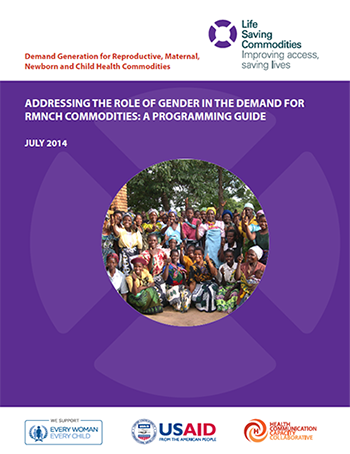
Addressing the Role of Gender in the Demand for RMNCH Commodities: A Programming Guide
This guide is a resource for increasing demand for the 13 reproductive, maternal, newborn, and child health (RMNCH) commodities identified as underutilized by the UN Commission on Life-Saving Commodities (UNCoLSC) for Women’s and Children’s Health. This guide provides information and practical tools to help program managers determine how gender norms and roles may limit demand for these commodities, and how to address these norms and roles to ultimately increase the demand for and utilization of these commodities.
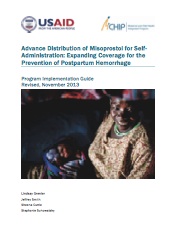
Advance Distribution of Misoprostol for Self-Administration: Expanding Coverage for Postpartum Hemorrhage Prevention
MCHIP’s updated program implementation guide provides step-by-step instructions on how to improve and expand misoprostol distribution programs alongside lessons from the field.
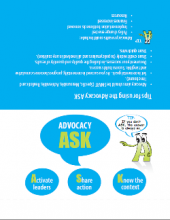
Advocacy ASK
Example for the ASK approach (activate leaders, share action, know the context).
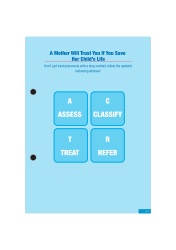
Amoxicillin Project Examples
Click on the image to view project examples for Amoxicillin
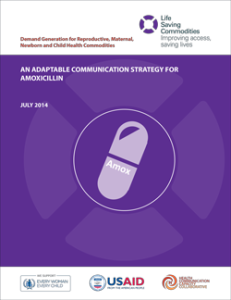
An Adaptable Communication Strategy for Amoxicillin
An Adaptable Communication Strategy for Amoxicillin
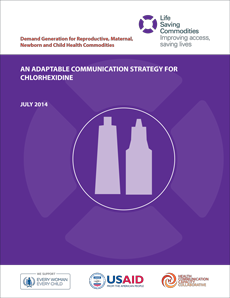
An Adaptable Communication Strategy for Demand Generation: Chlorhexidine
This Adaptable Communication Strategy provides step-by-step guidance and illustrative content in creating a communication strategy to generate demand for chlorhexidine.
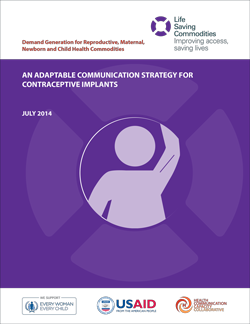
An Adaptable Communication Strategy for Demand Generation: Contraceptive Implants
This Adaptable Communication Strategy provides step-by-step guidance and illustrative content in creating a communication strategy to generate demand for contraceptive implants.
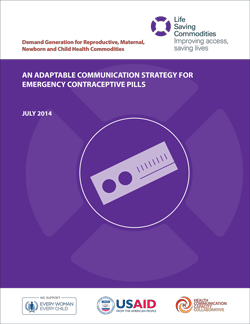
An Adaptable Communication Strategy for Demand Generation: Emergency Contraception
This Adaptable Communication Strategy provides step-by-step guidance and illustrative content in creating a communication strategy to generate demand for emergency contraception.
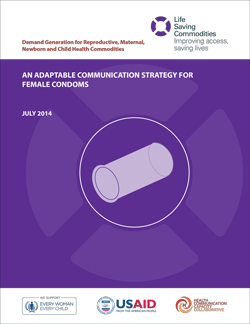
An Adaptable Communication Strategy for Demand Generation: Female Condom
This Adaptable Communication Strategy provides step-by-step guidance and illustrative content in creating a communication strategy to generate demand for female condom.
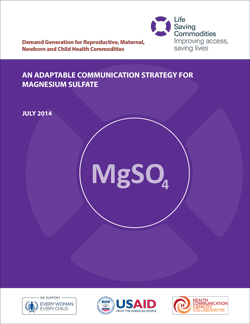
An Adaptable Communication Strategy for Demand Generation: Magnesium Sulfate
This Adaptable Communication Strategy provides step-by-step guidance and illustrative content in creating a communication strategy to generate demand for Magnesium Sulfate.
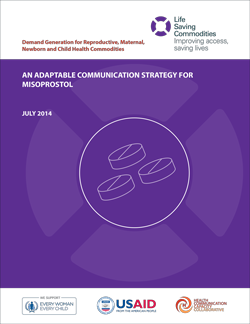
An Adaptable Communication Strategy for Demand Generation: Misoprostol
This Adaptable Communication Strategy provides step-by-step guidance and illustrative content in creating a communication strategy to generate demand for misoprostol.
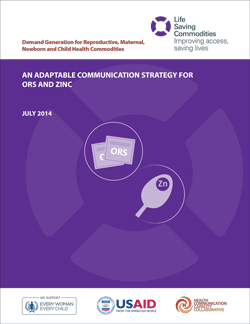
An Adaptable Communication Strategy for Demand Generation: ORS/Zinc
This Adaptable Communication Strategy provides step-by-step guidance and illustrative content in creating a communication strategy to generate demand for ORS/Zinc.
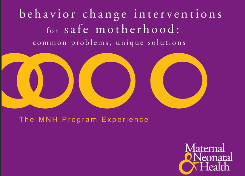
Behavior Change Interventions for Safe Motherhood: Common Problems, Unique Solutions
This paper focuses on the MNH Program’s work in the area of Behavior Change Interventions (BCI). BCI activities were undertaken in nearly every MNH Program country, and these activities were evaluated through population-based surveys in Burkina Faso, Guatemala, Indonesia and Nepal. The results of work in these four countries provide a valuable narrative from which constructive lessons can be learned. Behavior Change Interventions for Safe Motherhood Year Published: 2004 Organization: US Agency for International Development Length: 76 pages Languages: English
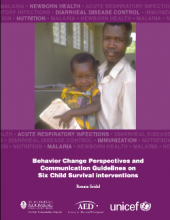
Behavior Change Perspectives and Communication Guidelines on Six Child Survival Interventions
This document is meant for those who want to incorporate behavior change and communication strategies into their child survival programs, as well as those who already plan and carry out such activities. It focuses on six major interventions and the key practices associated with these. It examines the challenges associated with improving these practices in developing country contexts, and aims to provide insight into how to design effective strategies. Behavior Change Perspectives and Communication Guidelines Year of Publication: 2005 Organization: Johns Hopkins Center for Communication Programs, Academy for Educational Development, UNICEF Length: 294 pages Languages: English
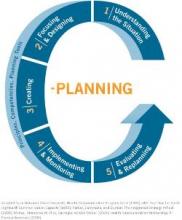
C-Modules: A Learning Package for Social Behavior Change Communication
C-Modules is a training program developed by Communication for Change (C-Change) to be used for facilitated, face-to-face workshops on social and behavior change communication. The modules cover situational analysis, program design and development, implementation, monitoring, evaluation, and re-planning. C-Modules: A Learning Package for Social Behavior Change Communication Year of Publication: 2011 Organization: FHI360/C-Change Length: 5 modules Languages: English, French, Spanish, Portuguese
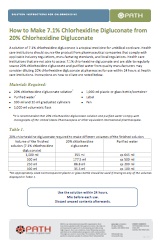
Chlorhexidine Project Examples
Click on the image to view project examples for Chlorhexidine
